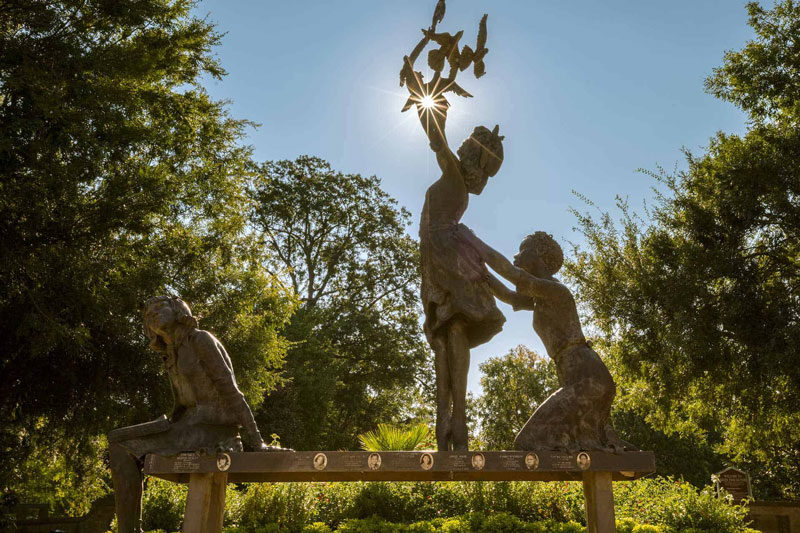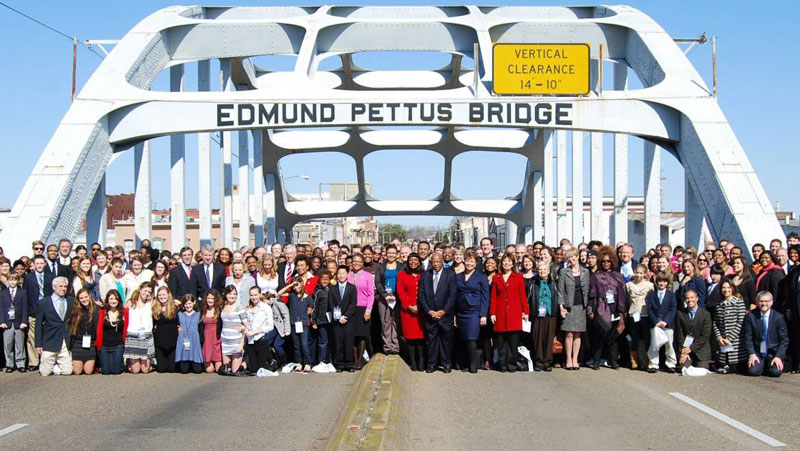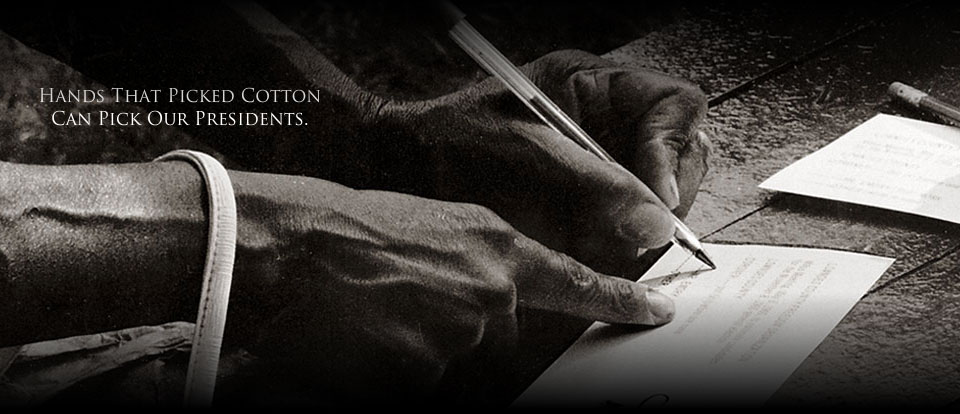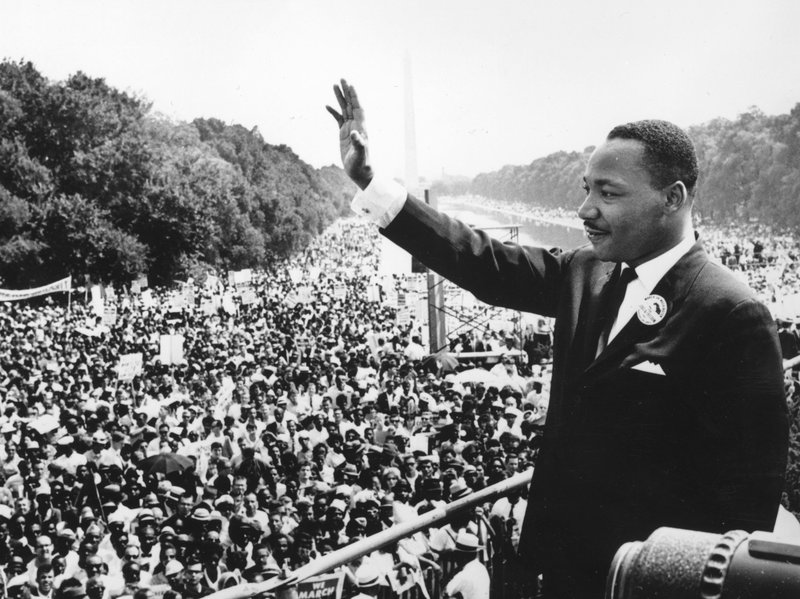Civil Rights Tour of the Southern US Starts In Memphis

Many of the important events that helped to shape our nation as we know it today took place in the southern United States. The Civil Rights Movement era was an important time of unrest needed to make racial discrimination against African Americans illegal and restore voting rights, as well as other rights afforded to all Americans by the United States Constitution. With the movement taking hold in the 1950s and 1960s, leaders of this movement began to emerge at various demonstrations taking place in Alabama, Georgia, and Tennessee.
The stories of the struggles for inalienable rights for all of our nation’s citizens is filled with triumphs and many tragedies. Though it may be a painful part of United States’ history, it is important and one worth learning more about by visiting the cities that were integral in this revolution.
Memphis, Tennessee
Begin your Civil Rights Tour in Memphis where one of the turning points of the movement took place. Inside what is arguably the most iconic landmark of the Civil Rights Movement, The Lorraine Motel, where Dr. Martin Luther King, Jr. was assassinated in 1968 just outside room 306, is now home to the National Civil Rights Museum. This interactive museum is filled with artifacts and media that take visitors on a tour of history, from slavery to the many protests of the American civil-rights movement.
Withers Collection Museum and Gallery, located on Beale Street in the heart of Memphis, is where guests can view the many photographs documenting the struggle for civil rights taken by freelance photojournalist, Dr. Ernest C. Whithers. From Dr. Martin Luther King, Jr. to Medgar Evers, as well as Negro League baseball players like Jackie Robinson and Willie Mays, Dr. Withers captured the key players, events, and settings in the movement.
Housed inside a modest, antebellum home, the Slave Haven Underground Railroad Museum allows visitors to take a peek into one of the best-kept secrets during the anti-slavery movement: the Underground Railroad. During a time when slaves were exploited to work on plantations and farms, many residents risked their lives helping fugitives escape a life of slavery by harboring them in their home on their way to freedom. Guests to this museum can experience the dark, damp root cellar, trapdoors, and hidden passageways where travelers on the Railroad stayed until they were able to move on to the next station and to free lives.
Birmingham, Alabama
After a visit to Memphis, hop on Highway 22 going south to Birmingham, Alabama. Make your first stop in the largest city in Alabama by visiting the Birmingham Civil Rights Institute, whose mission includes teaching generations about civil and human rights by exploring the past, and building a better future together. An affiliate of the Smithsonian Institution, the Institute contains exhibits and galleries that depict the efforts of the Civil Rights Movement in the 1950s and 1960s.
Across the street from the Birmingham Civil Rights Institute is the historic Sixteenth Street Baptist Church. The first African American church in Birmingham is the site of the horrific event in 1963 when a racially motivated bombing of the church killed four girls attending Sunday School and injured more than 20 other members of the congregation. This tragedy prompted the federal government to get more involved in the Civil Rights Movement, resulting in President Lyndon B. Johnson passing the1964 Civil Rights Act the following year. It is a central landmark in the Birmingham Civil Rights District that accepts visitors for tours and worship.

Adjacent to the church is the Kelly Ingram Park, home of the Four Spirits sculpture that was unveiled in 2013 and depicts the four girls who were killed in the Sixteenth Street Baptist Church bombing. Part of the Birmingham Civil Rights District, this park was also the site for numerous demonstrations, including one taking place four months before the church bombing. When law enforcement confronted the participants, mostly made up of high school students who organized the event, the use of fire hoses and police dogs used to disperse the crowds was shown internationally as new media broadcasted the inhumane tactics. This brutal event was one of the catalysts for Birmingham’s city leaders to put an end to public segregation.
Selma, Alabama

At the end of the day spent in Birmingham, take US-80 south to Selma, Alabama. During the Civil War, Selma was one of the South’s main military munitions manufacturing locations. Selma is also known for where a demonstration for voting rights turned into one of the most violent events in civil rights history. In 1965, as 600 protestors crossed the Edmund Pettus Bridge as part of a march from Montgomery, Alabama to Selma protesting the denial of African American citizens the chance to register to vote, State Troopers and armed citizens attacked and beat the marchers with nightsticks and tear gas. The day, known as “Bloody Sunday” sparked public outrage and spurred a law that would allow protestors to continue their marches to be overturned, resulting in President Johnson demanding that Congress pass voting rights legislation, which ultimately occurred in 1966.

On the other side of Edmund Pettus Bridge, less than half of a mile from the banks of the Alabama River, visitors can learn more about how African Americans fought for their right to vote at the National Voting Rights Museum and Institute. This unique museum is dedicated to chronicling the fight for the right to vote in the United States for minorities and women. Exhibits and archives share the stories of leaders in both the African-American Voting Rights and Women’s Suffrage movements. It is well worth spending a few hours learning about and appreciating, the right to have our voices heard by our government through the ability to vote.
Montgomery, Alabama
About 50 miles east of Selma, is the capital of Alabama, Montgomery, and where Rosa Parks, helped to change our nation. When Miss Parks chose to not give up her bus seat to a white bus rider in the section designated to African Americans on that fateful day, she ignited the 381-day Montgomery Bus Boycott. This exercise in civil disobedience resulted in the beginning of the end of racial segregation. The only museum dedicated to honoring Rosa Parks and her accomplishments in the Civil Rights Movement, the Rosa Parks Museum at Troy University is a wonderful place to learn about civic participation and how to peacefully make positive social change. After spending time learning about Miss Parks, a half-mile walk will bring visitors to another important stop on the tour.
The significance of Montgomery as a critical location in the Civil Rights Movement in the 20th century is not lost on visitors of the Equal Justice Initiative’s National Memorial for Peace and Justice and The Legacy Museum. Montgomery was the capital of the slave trade in the mid 19th century, and now, The Legacy Museum is located on the same land where more than 1,000 human lives were traded for labor. The Memorial is a short 15-minute walk from the museum and is a place that honors African Americans who were victims of lynching and racial terrorism. As places of education and reflection, visitors will leave with a deeper view of why the Civil Rights Movement was so critical for the freedom and rights for everyone.
Tuskegee, Alabama
After a stop in Montgomery, jump back on I-85 going north for a 40-minute drive to Moton Field, home of the Tuskegee Airmen National Historic Site. Now operated by the National Park Service, visitors can stroll through a series of exhibits that commemorate the contributions of the African American airmen who fought in World War II. Moton Field was where most of the flight training occurred for the pilots known as “Red Tails” after they painted the tails of their planes. This park celebrates the achievements of these pioneering airmen, as well as the women who worked on the ground and trained hundreds of cadets to pack and maintain parachutes used in the war.
Continue the tour of honoring the accomplishments of revered African Americans by visiting the George Washington Carver Museum at the now designated National Historic Site, Tuskegee Institute, founded by Booker T. Washington. Stroll through the museum and check out the many inventions developed by Dr. Carver while at the Tuskegee Institute, including some of the peanut products he developed. Guests are also invited to tour Washington’s home “The Oaks,” located on the grounds. A former slave, Washington developed the institute to train teachers, as well as educate students on agriculture and construction.
Atlanta, Georgia
The end of the Civil Rights Tour starts with a two-hour drive from Tuskegee to Atlanta, Georgia. Birthplace of the most well-known figure of the Civil Rights Movement, Dr. Martin Luther King, Jr., it is also home to other notable leaders such as Andrew Young, John Lewis, and Julian Bond. Atlanta’s most visited spot, the Martin Luther King, Jr. National Historic Site consists of 35 acres, including Dr. King’s childhood home and the original Ebenezer Baptist Church, where Dr. King was baptized and where both his father Martin Luther King Sr. and he were pastors.
Plan to spend the day at this site embarking on tours, including visiting The Martin Luther King, Jr. Center for Nonviolent Social Change, Inc. The King Center is filled with exhibitions, archives, and memorabilia about Dr. King’s life and showcases his numerous achievements. Dr. King and his wife, Coretta Scott King, fought peacefully for rights and social justice for all.
Activists that promoted nonviolence, their memory and life together is beautifully honored in the International World Peace Rose Gardens. Filled with 185 varieties of roses in a vibrant display of colors, this garden is the perfect place to be still while quietly contemplating the ideals of Dr. King as you conclude your tour of the battles and victories for Civil Rights. Still as relevant as when he delivered his “I Have A Dream” speech in 1963, his words epitomize the mission of the movement that has impacted every person in the United States today:
“Now, I say to you today my friends, even though we face the difficulties of today and tomorrow, I still have a dream. It is a dream deeply rooted in the American dream. I have a dream that one day this nation will rise up and live out the true meaning of its creed: – ‘We hold these truths to be self-evident, that all men are created equal.” ― Martin Luther King Jr.

Map by The Map Chick





